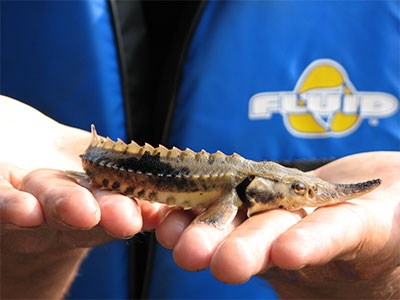Peregrine falcons, bank swallows and bats are some of the animals getting a helping hand from a Timminsmining operation.
Xstrata Copper’s Kidd Operations (Kidd Mine and Kidd Concentrator, part of Glencore Xstrata Group) is committed to biodiversity initiatives that not only involve its own operations, but the community as well.
Throughout the lifecycle of the company’s operations, biodiversity management plans are in place to protect species and the landscape. A staff of seven is involved in those operations.
“Mining is typically viewed as negative and as disturbing the land and the earth, so this is another opportunity to give back and assist the species that need help,” said David Yaschyshyn, superintendent of environment at Kidd Operations.
There have been large projects, such as the sturgeon restoration project on the Mattagami River, and smaller ones, such as a poster of birds found in Timmins.
“With many of the projects we do, it means establishing a good connection with the community,” he said. “It also brings biodiversity awareness and the opportunity for partnering.”
Since 2011, Kidd Operations has been involved in the sturgeon project when it provided funding and personnel to support a follow-up fish transfer and monitoring program.
Earlier this year, it committed $21,000 to the local Wintergreen Fund in support of the restoration project. The contribution extends support through to 2014. Kidd Operations will also continue to provide inkind donations of helicopter and personnel time for sturgeon habitat mapping and monitoring.
The sturgeon project began in 2002 in an effort to reestablish them in the local watershed, since there once was a large population.
“It was ideal for us to get involved in that project since we are in the watershed,” said Yaschyshyn. The quality of a mine’s effluent is subjected to a toxicity test. The regulations in Ontario require that it can’t be acutely toxic to rainbow trout fingerlings and a specific water flea.
“We have had a very long history of high compliance to that task, so it is a bit reassuring that what we discharge to Kidd Creek and the Porcupine River, and then the Mattagami River, is not environmentally harmful,” he said.
With financial help from Kidd Operations, the local naturalist group was able to print a poster of birds found in the area. It was of mutual benefit since the company started monitoring different bird species around its sites and is currently doing a nocturnal owl survey, with help from the naturalist group.
“It requires people to go out at night and do some calls, and then listen for the calls back. We are thankful they are helping us out, and we helped with their poster.
The poster is also good in helping our own employees and contractors identify birds which they can report back to us,” said Yaschyshyn.
In 2011, a pair of peregrine falcons took up residence in the former open pit and had a successful breeding season, with one offspring that is known to have survived.
“All that summer we were trying to find the nest, but we could not locate it,” he said. “They often like to perch on top of the Number 1 headframe, which is 23 stories tall, or 235 feet tall, and right beside the pit.”
In 2012 there was a sighting of one, but a mate never showed up. There was another sighting in April this year, but a pair hasn’t been spotted yet.
Other projects have included the construction of bat houses, with the help of a local high school and the Monteith Correctional Facility.
The raptor nesting project, started this year, also involves a partnership with a local senior public school. The students will be building the four platforms, which will be installed in areas recommended by the Ministry of Natural Resources and the Aboriginal community.
“With the decline of certain raptor species, such as bald eagles and golden eagles, we figured it would be nice to help them out with the installation of nesting boxes,” said Corey McLister, environmental coordinator.
“Even with the vast habitat we have in the North, some birds are still taking to human structures. Hopefully we will have some nests by the fall to attract residency next spring.”
When animals make a home around the two sites, often the area must be protected, especially if the species is at risk or threatened.
“We got news that bank swallows may be making it on the species at risk list, and we do have them on site, and we have been monitoring them for a few years,” said Stephanie Thibeault, senior environmental co-ordinator.
“They are in a sand pile, and we use the sand to cover our landfill site as daily cover, but over the last few years, some of those areas have been left intact. We have communicated to employees on site, to be aware and not to touch the sand pile. Recently, we ordered signs to be put up there and there will be ongoing monitoring.”
The operations also fall under the Mining Association of Canada towards sustainable mining initiatives (MACTSM) and within those requirements, there is a biodiversity component. Scores are based on checklists and indicators, and Kidd Operations has a Double A rating, with a Triple A being the highest. “There is ongoing monitoring on site and we encourage all employees and contractors to report to us if they see anything living,” said Yaschyshyn. “It gives us an idea of unique things passing through or even for health and safety concerns, such as watching out for a family of bears or moose.” “
It also helps us to take action too,” Thibeault said. “If it is a certain species and we notice it is on the protected list, then we can do something that helps it.”




